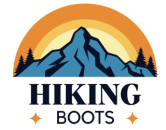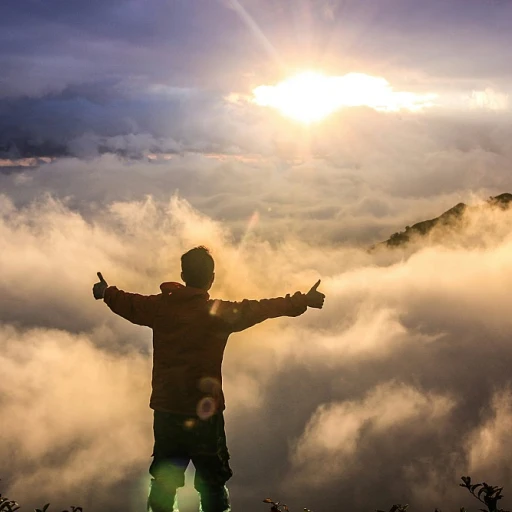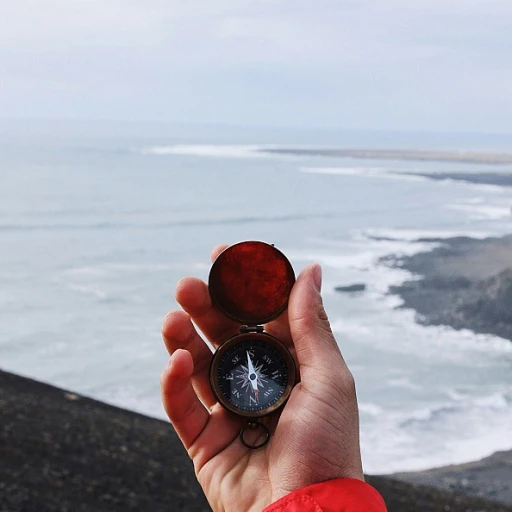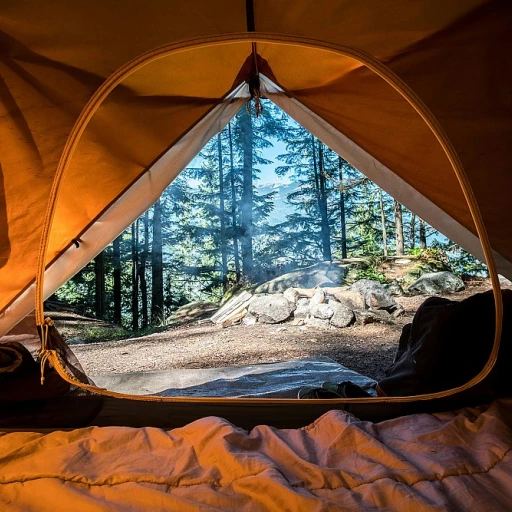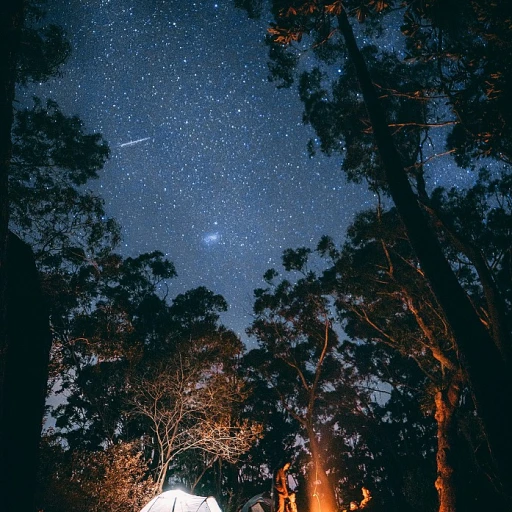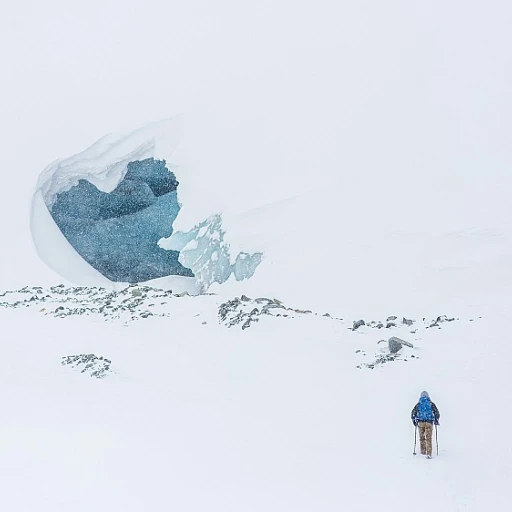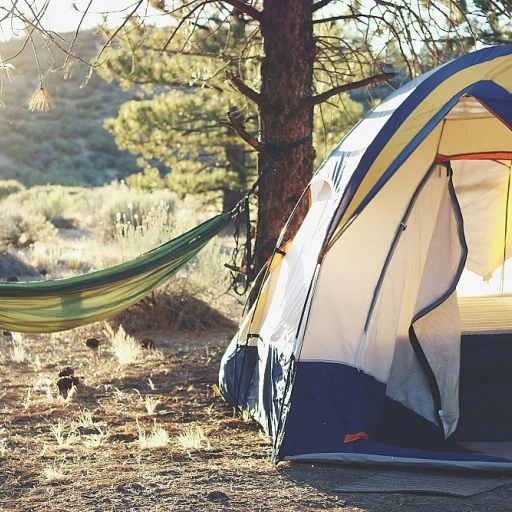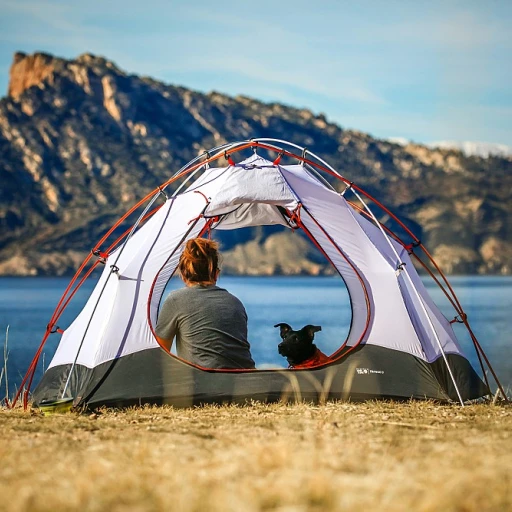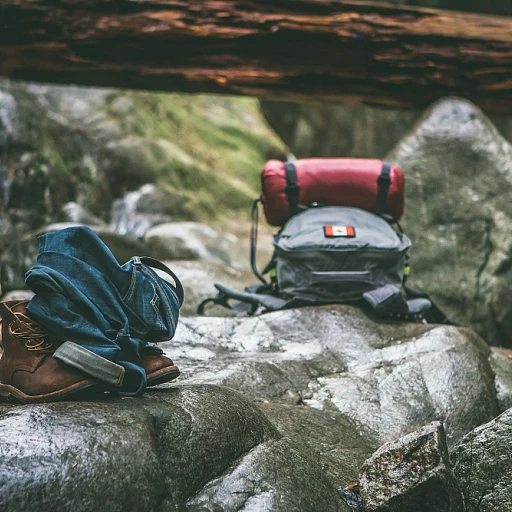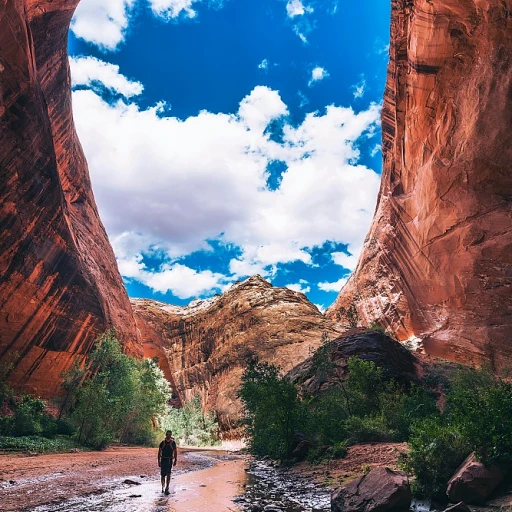
Exploring Yellowstone's iconic geysers
Old faithful and beyond: the geysers you can't miss
When we talk about the must-see spots in Yellowstone, the geysers always steal the show. Old Faithful, one of the most famous geysers in the world, erupts pretty reliably every 60 to 110 minutes, shooting water up to 185 feet in the air. It's a spectacle that's impossible to forget. According to the National Park Service, approximately 4.1 million visitors flocked to Yellowstone National Park in 2022, and many of them come specifically to witness the power of Old Faithful.
Geysers in the upper geyser basin: more than just old faithful
But Old Faithful is just the beginning. The Upper Geyser Basin, located near Old Faithful, is home to nearly a quarter of the world's geysers. This includes the Giantess Geyser, Castle Geyser, and Beehive Geyser, each offering unique shows.
Walking the trails around the Upper Geyser Basin, you'll come across Morning Glory Pool, a stunning hot spring known for its vibrant colors. The beautiful hues are due to the presence of different thermophilic bacteria, which thrive at various temperature ranges.
Exploring the norris geyser basin: where geothermal activity takes the spotlight
Moving on to the Norris Geyser Basin, this area is recognized as the hottest and most dynamic geyser basin within the park. The Echinus Geyser, which previously held the title of the world's largest acidic geyser, is here, along with the Steamboat Geyser, the world's tallest active geyser. Steamboat can shoot water over 300 feet high, though its eruptions are less predictable than Old Faithful's. With an average water temperature of about 202 degrees Fahrenheit, Norris is the basin with the highest temperature records in the park.
Choosing the best geothermal tours
If you're looking for an expert's insight, guided tours are available, catering to all interest levels. Companies like Yellowstone Forever offer comprehensive tours that delve into the geothermal wonders. They provide a deep dive into the science and natural history behind these extraordinary phenomena.
Ready to expand your adventure beyond Yellowstone? Check out the top 10 hikes in Wyoming and explore more of what this incredible state has to offer.
Journey through the geyser basins
Upper geyser basin and its explosive wonders
Ever heard of Old Faithful? This dude's the real MVP of the Upper Geyser Basin, spouting off hot water like clockwork every 90 minutes. If you’re keen on snapping Insta-worthy shots, be sure to check out Castle, Riverside, and Daisy geysers too. Trust me, these guys won’t disappoint. According to the National Park Service, there are more than 150 geysers in this area alone!
Norris geyser basin: a geothermal hotspot
Methane-tastic and otherworldly, the Norris Geyser Basin offers a surreal geothermal experience. With temps reaching up to 459°F, it's no joke. Fun fact: The Steamboat Geyser, the tallest active geyser in the world, is right here. Its rare eruptions can shoot water up to 300 feet! Pro tip: Check the forecast; colder days can create stunning steam clouds.
Midway geyser basin and grand prismatic spring
One of Yellowstone’s shawties, Midway Geyser Basin packs a punch. This spot's home to the mind-boggling Grand Prismatic Spring. With hues straight out of a Van Gogh painting, its vibrant colors are due to microbe mats. It spans 370 feet in diameter, making it the largest hot spring in the United States. The color rainbow? That’s all thanks to heat-loving bacteria and minerals. Want the best view? Head to the overlook trail across the road.
West thumb geyser basin by Yellowstone Lake
Next to the scenic Yellowstone Lake is the West Thumb Geyser Basin. Over here, hydrothermal features include geysers that jet through the lake itself! Abyss Pool, one of the deepest in the park, descends over 53 feet. Worth the stroll? Absolutely.
Morning Glory Pool: a hidden gem
Though it’s over in the Upper Geyser Basin, the Morning Glory Pool deserves its own limelight. Named for its striking resemblance to the morning glory flower, its dazzling blue center transitions to greens and reds on the outer ring. A little caution—changes in color are due to vandalism and debris affecting the water temps. Sad but true.
Wildlife spotting in Lamar Valley
Best spots in Lamar Valley for wildlife watching
When you're in Yellowstone, wildlife spotting in Lamar Valley is an absolute must! Known as the American Serengeti, this magnificent area is renowned for its wide array of animals. You could spot everything from bison and elk to the more elusive wolves and grizzlies. Prime wildlife watching spots include the road between Tower Junction and Cooke City. Early mornings and evenings are the peak times as animals are most active during these hours.
Entrance passes and timings: plan your visit well
Entrance to Yellowstone National Park requires a pass, which you can purchase at any of the park's entrances. Fees range from $20 for individuals (on foot, bike, or ski) to $35 for private vehicles. Lamar Valley is accessible year-round; however, remember that the best time to visit for wildlife viewing is from early summer to late fall. During winter, the valley is a haven for cross-country skiing and snowshoeing enthusiasts.
Gear you need for safe and comfortable wildlife viewing
Wildlife spotting demands the right gear to enhance the experience and keep you safe. Bring along a pair of high-powered binoculars and a zoom lens camera for the best view without disturbing the animals. Wearing layered clothing is crucial due to the unpredictable weather. Also, never forget essentials like water, snacks, and a basic first-aid kit. Following these tips ensures a stress-free and enjoyable wildlife viewing adventure.
Hiking trails around Yellowstone Lake
Discovering trails around lake yellowstone
The stunning scenery surrounding Yellowstone Lake offers some of the most serene yet thrilling hiking experiences in Yellowstone National Park. With an expansive surface area of 136 square miles, the opportunities for exploration are endless.
First up, the Storm Point Trail. This relatively easy 2.3-mile loop offers hikers breathtaking views of Yellowstone Lake, Storm Point, and the surrounding forests. Ideal for novice hikers and families, this trail is known for its sightings of bison and various bird species. According to NPS data, around 75% of hikers on this trail report wildlife encounters, making it a perfect spot for nature enthusiasts.
For something a bit more challenging, consider the Elephant Back Mountain Trail. This moderate 3.6-mile loop begins near the Fishing Bridge Visitor Center, weaving through lush forests and rewarding hikers with panoramic views of Yellowstone Lake from the summit. It’s an excellent choice for intermediate-level hikers.
Fun Fact: Yellowstone Lake sits at an elevation of 7,733 feet, making it one of the largest high-elevation lakes in North America.
The Yellowstone River Picnic Area Trail offers a peaceful escape and is perfect for those who prefer shorter hikes. This 1.2-mile round-trip trail near the Yellowstone River provides stunning views of the river and the Absaroka Mountains. Plus, it's an ideal spot for a midday picnic, where you can take in the natural beauty while enjoying a meal.
Things to know before you go
Before heading out, it’s essential to be prepared. Yellowstone weather can be unpredictable, so always carry essentials like water, snacks, and layers of clothing. Make sure you're familiar with the park's regulations and guidelines, especially regarding wildlife. According to studies by NPS, it’s always wise to carry bear spray while hiking.
Maps and up-to-date trail information can be obtained from park visitor centers. And remember, while the trails around Yellowstone Lake are generally well-marked, a GPS device or map is never a bad idea.
Exploring Yellowstone Lake on foot offers a unique perspective of one of the park’s most captivating features. Whether you’re an experienced hiker or looking for a family-friendly adventure, the lake’s trails promise unparalleled beauty and a chance to experience Yellowstone’s wilderness up close.
Admiring the Grand Prismatic Spring
Grand Prismatic Spring: A Wonderland of Colors
The Grand Prismatic Spring is one of Yellowstone National Park's most famed and photographed attractions. It's jaw-dropping, with a name that perfectly reflects its stunning rainbow of colors. As the largest hot spring in the United States and the third-largest in the world, this natural wonder truly lives up to its reputation.
Located in the Midway Geyser Basin, the Grand Prismatic Spring spans an impressive 370 feet in diameter and plunges to a depth of around 160 feet. Its vibrant hues come from microbial mats, which produce colors that range from brilliant oranges and reds to gorgeous greens and blues. According to a study conducted by the National Park Service, these mats are made up of thermophilic bacteria that thrive in the spring's hot environment, with water temperatures reaching up to 160°F (71°C).
Best time to visit Grand Prismatic Spring
Experts suggest that the best time to visit the Grand Prismatic Spring is during the summer months when the colors are most vivid. Early morning or late afternoon will provide good lighting for photographs without the overwhelming crowds. According to Yellowstone Park experts, almost 4 million visitors flock to the park each year, with the peak season being from June to August.
How to get there
The spring is easily accessible via the Grand Loop Road. Pro tip: take a short, scenic hike up the Grand Prismatic Overview Trail for unparalleled views and fantastic photo opportunities. This 0.8-mile round trip trail is relatively easy and can be done in less than an hour, making it a perfect spot for those visiting with kids or in a short time frame.
A sensory experience
The experience extends beyond just visual beauty. The sulfuric odor might take some getting used to, but it’s all part of the allure. As you stroll along the boardwalk encircling the colorful spring, you’ll be enveloped in light steam, reminding you of Yellowstone’s geothermal uniqueness.
Why Grand Prismatic Spring is unique
There's no other way to say it: it's dazzling. The spring's breathtaking colors are not only mesmerizing, but they're also a testament to the park's geothermic activity and natural beauty. A quote from Hank Heasler, the park geologist, sums it up perfectly: "The colors you see in the Grand Prismatic Spring are unparalleled anywhere else on Earth. It's a vibrant testament to the geologic wonders that operate beneath Yellowstone."
Check availability for guided tours in the area, which can provide insightful information and unique perspectives on the geological features and vibrant microbial life.
Visiting the Grand Canyon of the Yellowstone
Unveiling the majestic beauty of the grand canyon of the yellowstone
The Grand Canyon of Yellowstone is truly a sight to behold. This stunning natural feature, carved by the Yellowstone River, stretches approximately 20 miles long, with depth ranging from 800 to 1,200 feet. The canyon's vibrant colors are due to the various minerals present, with iron making it particularly striking.
Did you know? The canyon’s creation is believed to stem from a combination of volcanic and glacial activity, as well as constant erosion by the Yellowstone River over thousands of years.
Exploring the canyon’s highlights
When it comes to experiencing the Grand Canyon of Yellowstone up close, there are a few must-see spots:
- Lower Falls: The Lower Falls, standing at 308 feet, is the tallest waterfall in the park. It’s almost twice the height of Niagara Falls! One of the best views of this cascade is from the Artist Point, which offers panoramic vistas of the canyon.
- Upper Falls: Although less tall at 109 feet, the Upper Falls remains an impressive sight. Catching a view from the Uncle Tom’s Trail can be a thrilling experience.
- Inspiration Point: A viewpoint that offers breathtaking views down the canyon and the rugged scenery beyond. The name says it all!
Best times to visit
Summer is the most popular time to visit the Grand Canyon of Yellowstone, but fall can also be an excellent choice due to fewer tourists and stunning autumn colors. Early mornings and late afternoons tend to offer the best lighting for photographs.
Expert tips and insights
Tom Smith, a seasoned hiker and author of “Yellowstone's Natural Wonders,” suggests, “Pack plenty of water and snacks, and wear sturdy hiking shoes. Some trails around the canyon can be steep and challenging.” He also recommends visiting during the shoulder seasons to avoid the summer crowds.
Family-friendly spots
Visiting the canyon is also perfect for families. There are several easy trails suitable for kids, and ranger-led programs available, which are educational and engaging for young explorers.
If this adventure through Yellowstone has you craving for more, don’t forget to check out our guide to planning your adventure through every season in Zion National Park.
Educational tours and ranger programs
Unveiling Yellowstone's educational experiences
If you're keen to soak up some knowledge while exploring the wilderness, you'll love the educational tours and ranger programs available in Yellowstone National Park. These guided excursions are not only packed with fascinating information about the park's unique geology, wildlife, and history, but they're also a fantastic way to experience Yellowstone from a whole new perspective.
According to the National Park Service, Yellowstone sees an average of 4 million visitors annually (source: NPS). And for many of these visitors, participating in a ranger-led program is a highlight of their trip. These programs are designed to be insightful and engaging, with knowledgeable rangers who are passionate about sharing the park's wonders with you.
Ranger-led walks and talks
One of the most popular educational activities in Yellowstone is the ranger-led walk or talk. These can include guided hikes to some of the park's most scenic spots, such as the geyser basins or the Grand Canyon of the Yellowstone. Throughout these excursions, rangers explain the science behind these majestic landscapes and share stories from Yellowstone's storied past. For instance, during a geyser walk, you might learn why Old Faithful is so reliable and what makes the park's hot springs so colorful.
In addition to these daytime activities, many visitors rave about the evening programs held at various park lodges and amphitheaters. These sessions often cover a range of topics, from park history to stargazing and wildlife conservation, providing a relaxing yet educational end to your day in the park.
Junior Ranger Program
The Junior Ranger Program is perfect for families visiting with kids. This hands-on, participatory program is aimed at engaging younger visitors in the park's ecology and conservation efforts. By completing a series of fun and educational activities, kids earn a Junior Ranger badge, creating wonderful memories and fostering a lifelong appreciation for nature.
In 2019, it was recorded that over 825,000 children have become Yellowstone Junior Rangers since the program’s inception (source: NPS Junior Ranger Program), highlighting its popularity and success.
Explorer's Guide and Self-Guided Tours
For those who prefer a bit more independence, the park offers the Explorer's Guide, which provides detailed information for a self-guided exploration. This guide includes maps, trivia, and insights that can turn a regular hike into an educational adventure.
Whether you're joining a ranger-led walk to learn about the Norris Geyser Basin or letting your kids engage with the Junior Ranger Program, these educational initiatives elevate the Yellowstone experience. Combining the beauty of nature with rich educational enrichment makes visiting this national park a genuine adventure for all ages.
Family-friendly activities and accommodations
Unleashing the fun: Activities for families and little explorers
Yellowstone isn't just a haven for intrepid adventurers, it’s packed with activities that cater to families and young kids as well. Whether you're seeking educational engagement or just plain fun, there's something for everyone.
Junior Ranger Program
Kids can become Yellowstone Junior Rangers by participating in the park's Junior Ranger Program. They’ll get a chance to learn about the park’s history, geology, and wildlife through a series of engaging activities and educational material. With over 20,000 rangers joining annually, it's a not-to-be-missed opportunity for young ones (source: National Park Service).
Yellowstone National Park Lodges
When it comes to finding a family-friendly stay, options like the Yellowstone National Park Lodges offer a variety of accommodations. From cozy cabins to full-service hotels like Lake Yellowstone Hotel, these lodges often include amenities like playgrounds and ranger-led evening programs perfect for kids.
Exploring Geyser Basins
Family-friendly boardwalks around geyser basins such as the Norris Geyser Basin and Upper Geyser Basin offer safe and accessible paths for children. Walking through these magical sites, children can marvel at the hot springs and geysers erupting from the Earth.
Boating and Fishing
At West Thumb Geyser Basin, families can enjoy activities like boating and fishing on Yellowstone Lake. Equipped with boats rented from Yellowstone's Marinas or simply casting a line from the shore, these activities are perfect for some quality family bonding time (source: Yellowstone National Park Overview).
Wildlife Viewing
The whole family can spot bison, elk, and sometimes wolves in Hayden Valley and Lamar Valley. This presents a safe yet exciting opportunity to observe wildlife in their natural habitat. Hayden Valley, often quieter than Lamar Valley, sometimes offers easier wildlife sightings, making it perfect for kids.
Yellowstone: A Year-Round Destination
Don't think the fun stops in winter! Winter in Yellowstone offers unique experiences like snowshoeing, cross-country skiing, and guided snowmobile tours. Lamar Valley is especially stunning in its winter coat, providing both kids and adults a magical, snowy adventure.
Mammoth Hot Springs
Finally, don’t miss the awe-inspiring Mammoth Hot Springs. The travertine terraces at this location captivate the imagination and provide a unique geological study for curious young minds. Guided tours here often cater specifically to younger audiences, making learning fun and interactive.
For more information on other hiking adventures beyond Yellowstone, check out the Top 10 hikes in New Zealand for future family hikes.
